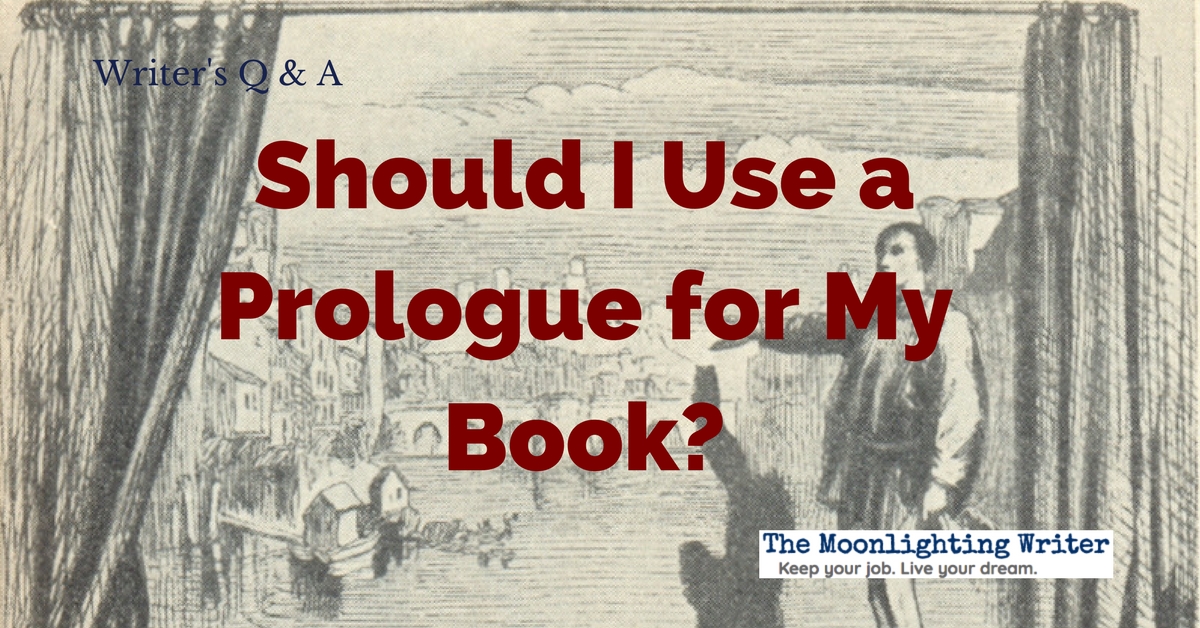The use of prologues is one of those discussion points — along with “plot v. pants” and cliffhangers — that can divide a roomful of writers in an instant.
Fans of the technique will tell you that a well-written prologue is essential for certain types of books, while naysayers will say it’s a lazy writer’s way to avoid careful story planning.
Which side is correct?
There probably never will be a definitive answer to that question, but we can use some simple diagnostic tools to make the best possible choice on a case-by-case basis.
When to Use a Prologue
According to Brian A. Klems at Writer’s Digest, there is indeed a clearcut criterion for when to use a prologue:
A prologue is used when material that you want to include in the opening is out of time sequence with the rest of the story.
So, if your story takes place in the present but there is a formative event in your protagonist’s past that directly affects his actions today, a prologue may work. Opponents would argue that you should instead weave that backstory into the main thread of your novel instead of breaking it out and slapping it in front of everything.
I think it’s more a matter of style than of laziness or fitness as a writer. Sometimes, getting those important events in front of the reader right at the beginning is more powerful than a subtle reveal intertwined with the rest of the book could ever be.
The choice is the author’s to make and will depend on the story and how much a potential prologue may add to it.
Is a Prologue Right for Your Novel?
That said, there are some questions you can ask to determine whether you should write a prologue or try another approach:
- Does your book still flow well if you make your prologue a normal chapter — Chapter 1? If so, don’t make it a prologue.
- Will readers be lost if they don’t have the backstory the prologue could provide? If so, you might need a prologue.
- Are you using the prologue primarily as a hook? If so, you might need to work on your story structure rather than including a prologue.
(NOTE: These tests are adapted from Mark McCalister’s excellent article on prologues at Writing4Success.)
If you work through these questions and answer them honestly, you’ll know whether a prologue is right for your novel.
How NOT to Write a Prologue
If you do decide to use a prologue, you should have a pretty good idea about what it should reveal: necessary information that doesn’t fit well into the main flow of your story, and which you can present in a gripping fashion that forces the reader to continue on to Chapter 1.
But even if your intentions are good, you could still end up with a front piece that’s not quite as powerful as it should be and that may be redundant. To make sure that you’re hitting the sweet spot, you’d do well to avoid Kristen Lamb’s “7 Deadly Sins of Prologues“:
- Prologue as a massive info dump
- Prologue unrelated (or nearly so) to main story
- Prologue as hook only
- Loooooonnnngggg prologue
- Prologue that doesn’t match main story in voice and/or style
- Prologue as world-building
- Prologue as mood-setting
Steer clear of these, and you’ll probably be OK.
Don’t be afraid of prologues, but don’t be too eager to use them, either.
They’re probably a bit overused on the whole, but they offer definite advantages in certain circumstances.
